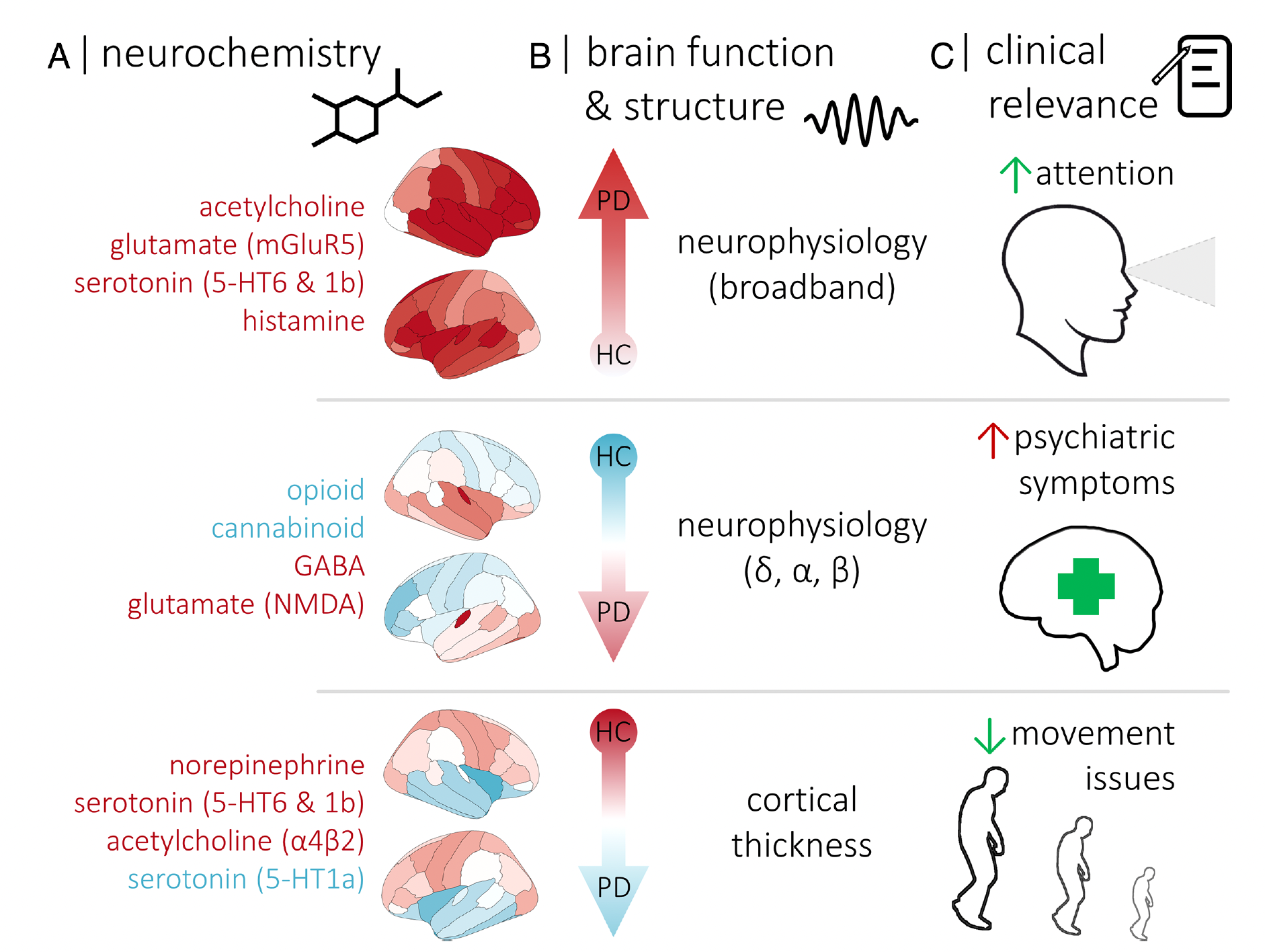Brain Changes in Parkinson's Disease: from Chemistry to Anatomy.
Parkinson's disease (PD), a progressive neurological disorder, has long been associated with motor symptoms. However, recent research has shed light on the intricate changes in the brain's cortical structure and neurophysiology, offering new perspectives on the disease.
We publish today in Annals of Neurology (open-access) a new study led by Alex Wiesman (CIHR Banting Postdoctoral Fellow in the lab) that reveals that the topographies of cortical alterations in PD patients are intricately linked to the brain's neurochemical organization. This research is pivotal in understanding how these changes relate to clinical impairments.
Key Findings
Neurophysiological and Structural Changes: We discovered that regions with increased neurophysiological brain activity in PD patients are rich in acetylcholine systems, particularly in those with preserved attention. Conversely, cortical thinning typically spares regions abundant in norepinephrine, especially in patients with maintained motor function.
Neurochemical Alignment: Our findings highlight a remarkable alignment between neurophysiological changes and neurochemical gradients across the surface of the brain. This includes increased activity in frontal regions enriched with cholinergic, glutamatergic, serotonergic, and histaminergic systems.
Clinical Implications: Our study's insights into the neurochemical topography of PD alterations have profound implications for disease monitoring and potential pharmacotherapeutic approaches. It suggests that targeting specific neurochemical systems could lead to more effective treatments for cognitive and psychiatric symptoms in PD.
Implications for Future Research
We hope our study opens avenues for more research, especially in the context of non-dopaminergic neuromodulatory or pharmacological interventions. It also suggests that interventions targeting neurophysiological processes in PD are more likely to ameliorate cognitive impairments and reduce psychiatric symptoms than to alleviate dopamine-resistant motor deficits.
Grateful for Open-Science Data Resources
Data for this research was obtained from a series of open-data resources: the Pre-symptomatic Evaluation of Novel or Experimental Treatments for Alzheimer’s Disease (PREVENT-AD) program, the Quebec Parkinson Network (QPN) initiative, and the Open MEG Archive (OMEGA) data repositories. These provided extensive clinical, neuroimaging, neuropsychological, and biological profiling of participants. We are particularly grateful to all patient volunteers who gave their consent to share their data with researchers.
Thank you also CIHR, NSERC and the NIH for trusting and sponsoring our research efforts!
Conclusion
This research marks a significant step in understanding Parkinson's disease beyond its motor symptoms. It underscores the importance of considering the neurochemical organization of the cortex in PD and its implications for treatment and management. As we continue to explore these complex relationships, we move closer to more targeted and effective therapies for PD patients.
Read the article now for free!
